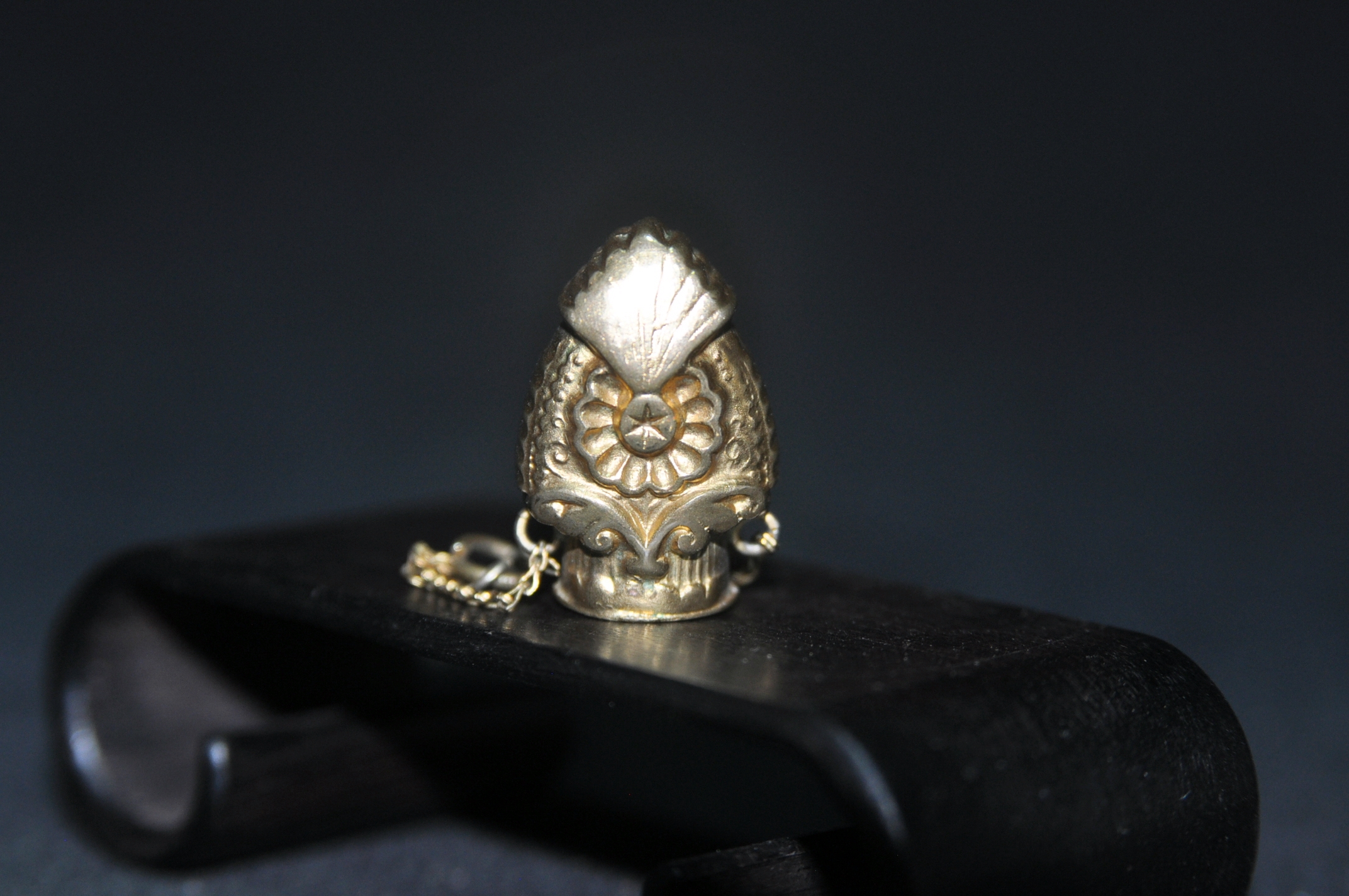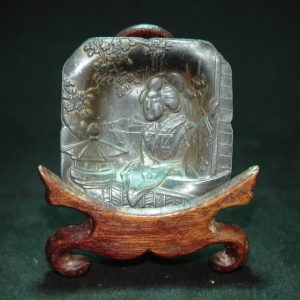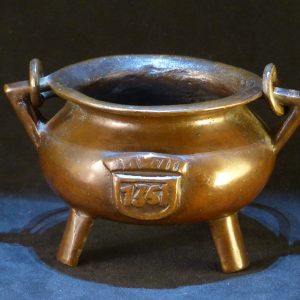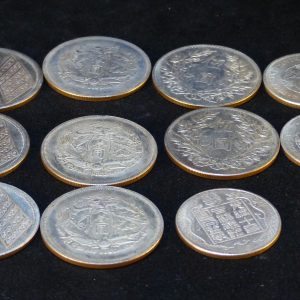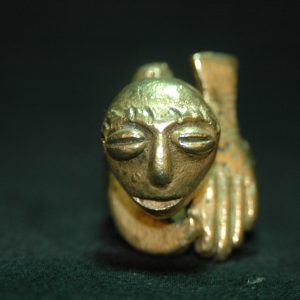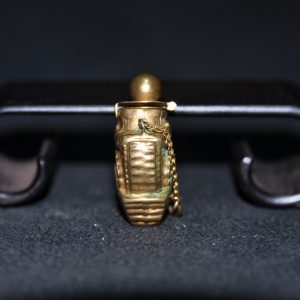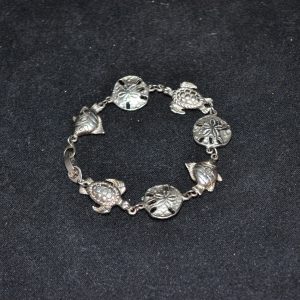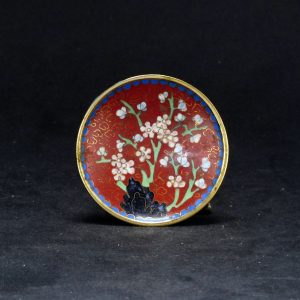Description
唐晋 鏨花草紋金壺項墜
参考:佳士得
現場拍賣 18338
2019年9月12日
金紫銀青 – 中國早期金銀器粹珍
拍品 525 東漢/晉 粟金提梁小瓶
A VERY RARE MINIATURE GOLD VASE
A VERY RARE MINIATURE GOLD BOTTLW
EASTERN HAN-JIN DYNASTY, 3RD-4TH CENTURY AD
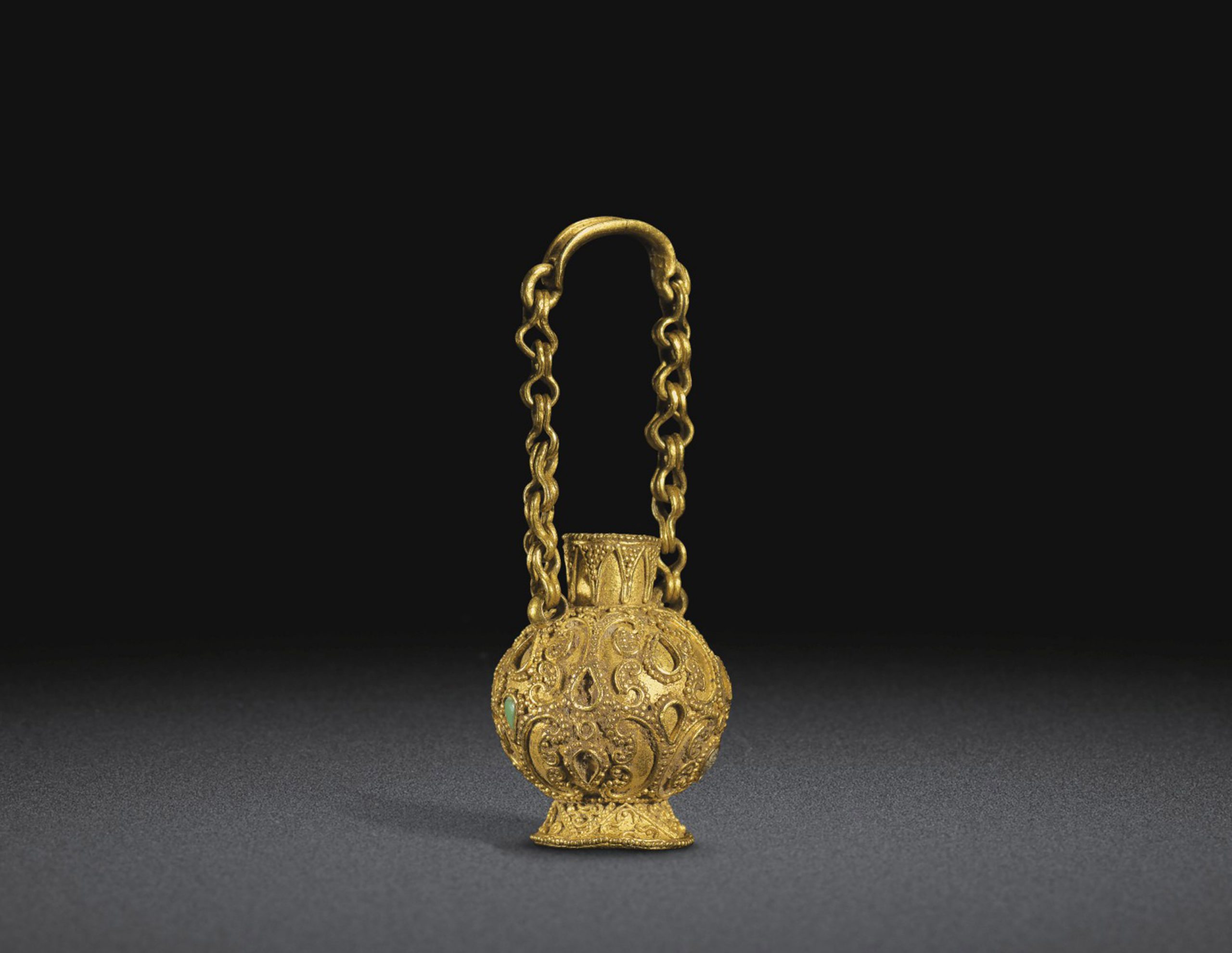
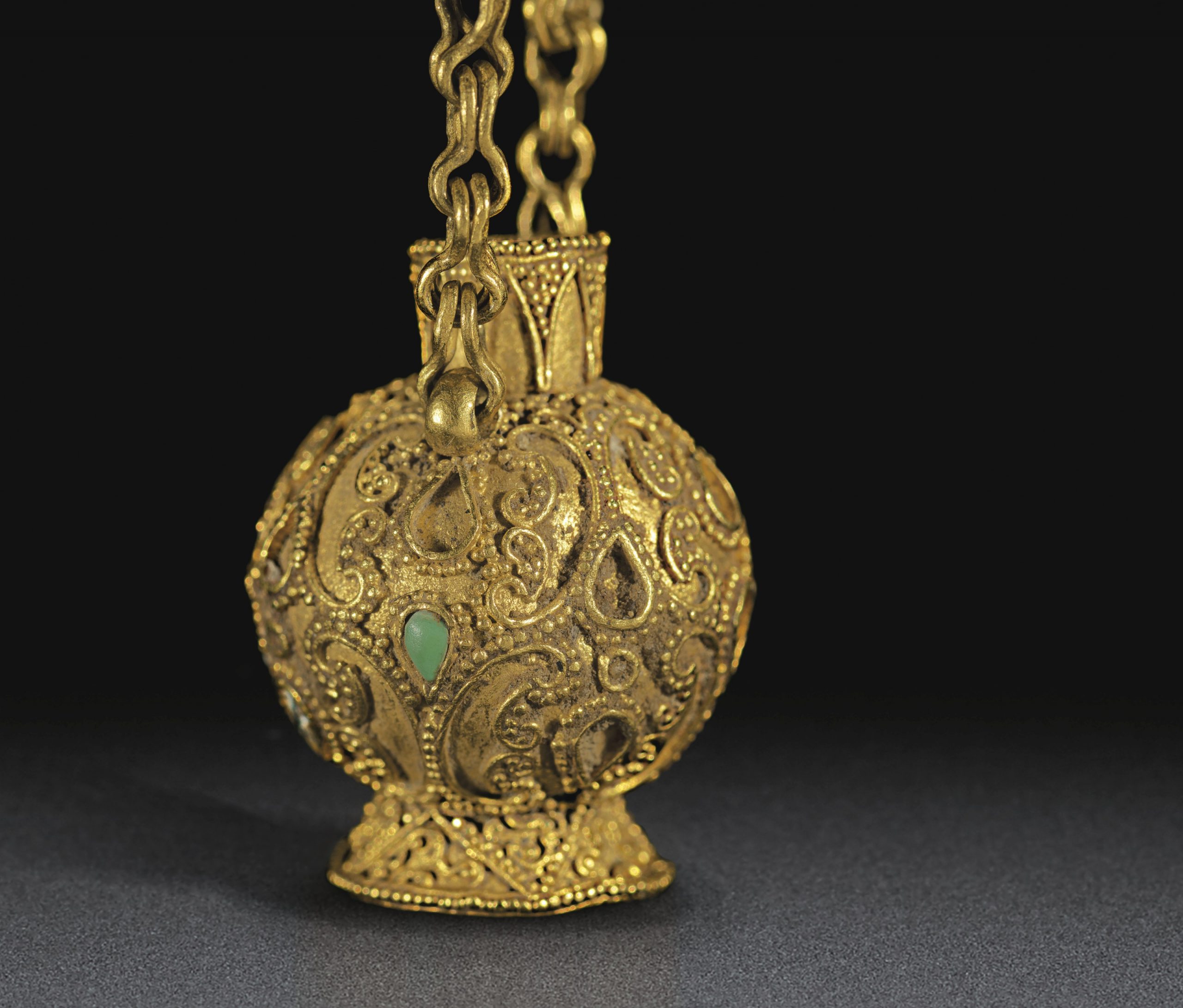
成交價 美元 237,500
估價 美元 40,000 – 美元 60,000
東漢/晉 粟金提梁小瓶
EASTERN HAN-JIN DYNASTY, 3RD-4TH CENTURY AD
The bottle, ¾ in. (1.8 cm.) high; weight 9.4 g
來源
The George Eumorfopoulos (1863-1939) Collection.
Sotheby’s London, 5-6 June 1940, lot 503.
Dr. Johan Carl Kempe (1884-1967) Collection, Sweden, before 1953, no. CK16.
Sotheby’s London, Masterpieces of Chinese Precious Metalwork. Early Gold and Silver, 14 May 2008, lot 38.
出版
Bo Gyllensvärd, Chinese Gold and Silver in the Carl Kempe Collection, Stockholm, 1953, cat. no. 16.
Zhang Linsheng, ‘Zhongguo gudai di jingjin gongyi’, The National Palace Museum Monthly of Chinese Art, No. 14, 1984, pl. 54, fig. 9.
Chinese Gold and Silver in the Carl Kempe Collection, The Museum of Art and Far Eastern Antiquities in Ulricehamn, Ulricehamn, 1999, pl. 15.
Qi Dongfang, Tangdai jin yin qi yan jiu [Research on Tang gold and silver], Beijing, 1999, p. 217, fig. 2-33.
展覽
Washington, D.C., Smithsonian Institution, Chinese Gold and Silver in the Carl Kempe Collection, 1954-55, cat. no. 16.
New York, Asia House Gallery, Chinese Gold, Silver and Porcelain. The Kempe Collection, 1971, cat. no. 9, an exhibition touring the United States and shown also at nine other museums.
狀況報告
我們力求記錄此件作品在製造後所經歷的變化。
– 整體狀況良好
– 一些藍綠色鑲嵌物遺失,其餘已石化
– 缺失了蓋子
– 頸部略微彎曲
– 內部足圈上有一些殘留物環繞著字元
– 在內部足圈上用黑色墨水刻有CK16
拍品專文
这个精美的微型金瓶是金珠装饰运用的一个典范,主要出现在汉代和六朝时期的小型器物或装饰品上。金珠技术起源于公元前第三千年的古代近东,并首次出现在中国的金饰品上,这些饰品与北方草原的游牧民族有关,出现在公元前第四世纪末期。到了西汉时期,即公元前3世纪,这种技术已经被中国金匠采用,其特点是通过扩散焊接而不是传统的焊接将微小的金粒附着在金背景上,它在六朝时期以及唐宋早期仍然很受欢迎。
堪萨斯城的纳尔逊-阿特金斯博物馆收藏了一件类似的带环把手的微型金壶,仍然保留着盖子,它是汉代的三件微型金饰品之一,装饰有金珠,可参考R. Soame Jenyns和William Watson的《中国艺术,小品艺术》(1963年)一书。在《亚洲艺术》杂志(2008年3-4月号)上,杨伯达的《中国古代黄金首饰和装饰文化》中,还可以看到一些汉代高级墓葬中发现的装饰有金粒的微型金首饰,可参考图版39、40、42和43。另外一些带有金粒装饰的小金饰品也在《天上人间:中国金匠艺术》(香港中文大学艺术博物馆,中国研究所,程迅堂藏品,2007年)中有所体现,图版B06A、B和B11。一对类似装饰的金壶,被归属于东汉时期,可参考《中国金饰》(2003年)中的图片116。
This superb miniature gold bottle is a fine example of the use of gold granulation, mostly seen on small articles or ornaments of Han and Six Dynasties date. The technique of granulation was developed in the ancient Near East as far back as the 3rd millennium BC, and first appeared in China on gold ornaments associated with the nomads of the northern plains at the end of the 4th century BC. By the Western Han period, 3rd century BC, this technique, in which tiny gold spheres are attached to a gold background by diffusion bonding rather than soldering, had been adopted by Chinese goldsmiths, and continued in popularity into the Six Dynasties period and through the Tang into the early Song periods.
A similar miniature gold hu-form bottle with a link handle, that still retains its cover, is one of three miniature gold ornaments decorated with granulation, and dated to the Han dynasty, in the Nelson-Atkins Museum, Kansas City, illustrated by R. Soame Jenyns and William Watson, Chinese Art, The Minor Arts, New York, 1963, pp. 32-33, pl. 11. (Fig. 1) Gold granulation can also be seen on several miniature gold ornaments of Han-dynasty date found in high-ranking tombs illustrated by Yang Boda, ‘Ancient Chinese Cultures of Gold Jewellery and Ornamentation’, Arts of Asia, Vol. 38, No. 2, March-April 2008, pp. 100-102, pls. 39, 40, 42 and 43. Other small gold ornaments with granulation are illustrated in Celestial Creations: Art of the Chinese Goldsmith, The Cheng Xun Tang Collection, vol. I, Art Museum, Institute of Chinese Studies, The Chinese University of Hong Kong, 2007, pls. B06A and B and pl. B11. A pair of similarly decorated gold bottles, attributed to the Eastern Han dynasty, is illustrated by Simon Kwan and Sun Ji, Chinese Gold Ornaments, Hong Kong, 2003, pl. 116.

![[临渊阁]天地一家春](https://www.antiquekeeper.ca/wp-content/uploads/2023/04/BW-Erping-1a-17-6-1.jpg)




